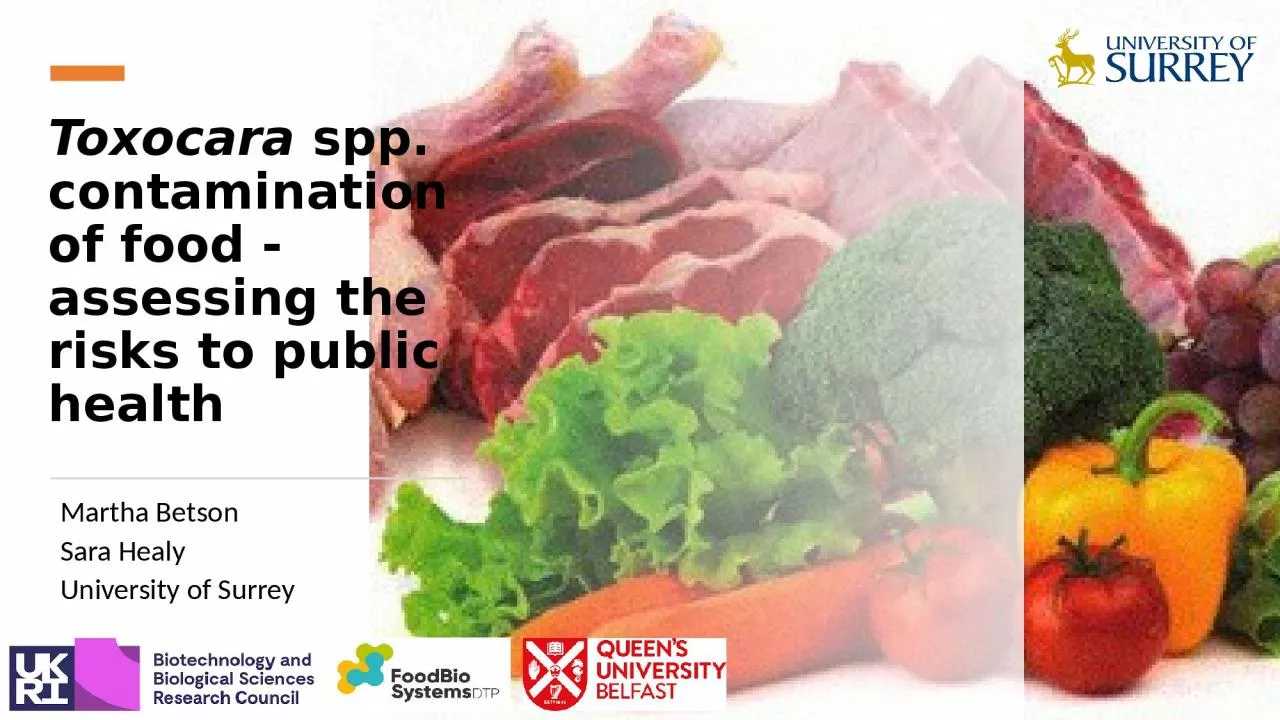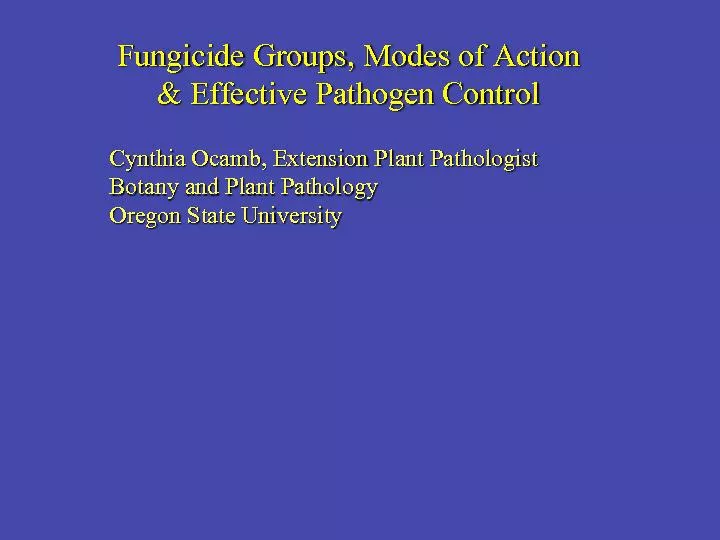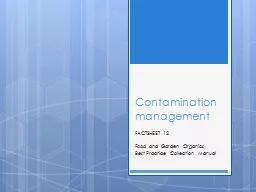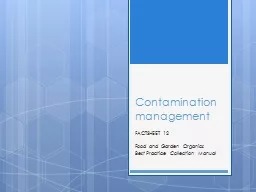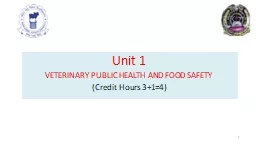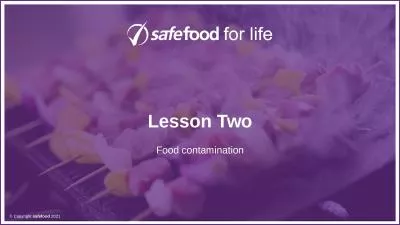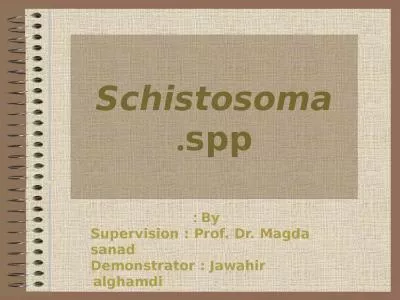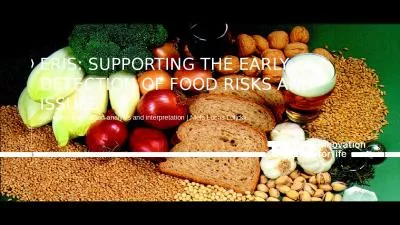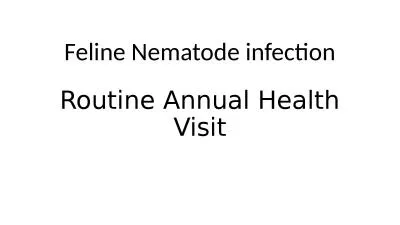PPT-Toxocara spp. contamination of food - assessing the risks to public health
Author : beatrice | Published Date : 2024-03-15
Martha Betson Sara Healy University of Surrey Human toxocariasis Caused by Toxocara sp canis cati Humans accidental hosts Wide clinical presentation from no
Presentation Embed Code
Download Presentation
Download Presentation The PPT/PDF document "Toxocara spp. contamination of food - ..." is the property of its rightful owner. Permission is granted to download and print the materials on this website for personal, non-commercial use only, and to display it on your personal computer provided you do not modify the materials and that you retain all copyright notices contained in the materials. By downloading content from our website, you accept the terms of this agreement.
Toxocara spp. contamination of food - assessing the risks to public health: Transcript
Download Rules Of Document
"Toxocara spp. contamination of food - assessing the risks to public health"The content belongs to its owner. You may download and print it for personal use, without modification, and keep all copyright notices. By downloading, you agree to these terms.
Related Documents

